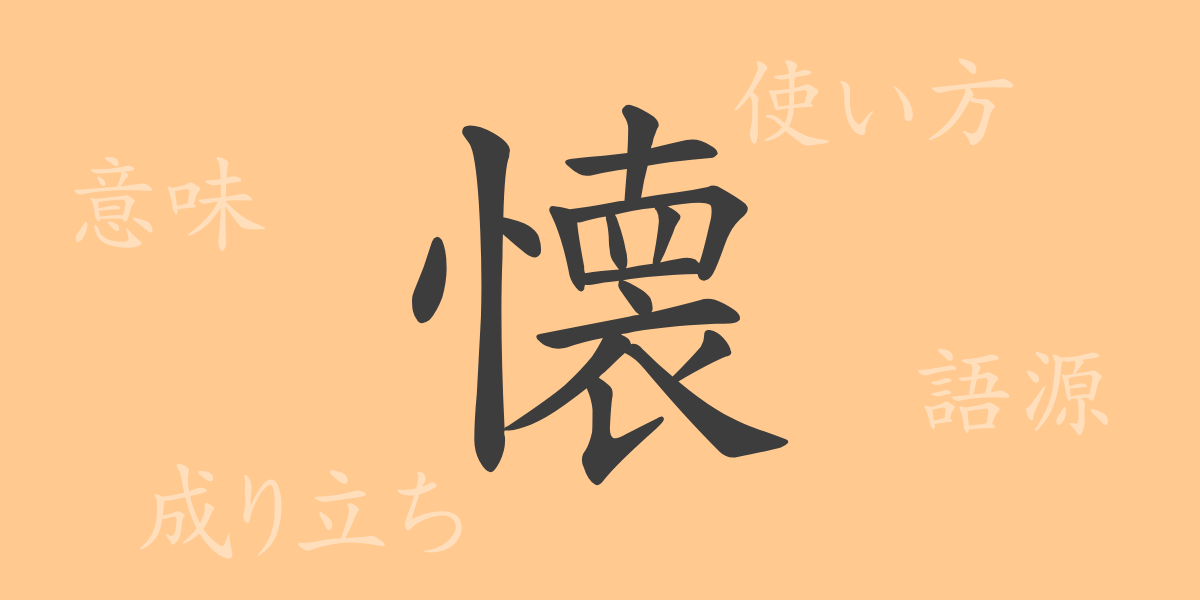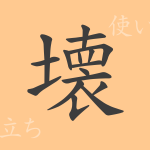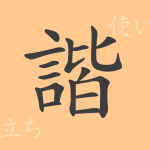In the Japanese language, there exists a variety of kanji characters that richly express emotions, landscapes, and culture. “懐 (Kai)” is one of the kanji that is particularly suitable for expressing the sentiments of the Japanese people and is frequently used in our daily lives. In this article, we will delve deep into the world of “懐,” starting from its etymology, exploring its meanings and usages, readings and stroke count, and phrases and idioms using “懐.” Let’s dive together into the realm of “懐,” a common kanji character in Japan.
Etymology of 懐 (Kai)
Tracing the etymology of “懐,” we find its origins in ancient China. Originally written as “怀,” it meant to embrace, or to contain something within. This character is believed to have derived from a pictograph representing the act of holding something with hands, and its shape suggests the notion of embracing feelings or emotions within, which gradually took on more abstract meanings. In Japan as well, these connotations have been inherited and used to express a variety of emotions and states.
Meanings and Usages of 懐 (Kai)
“懐” has multiple meanings. It is commonly used to refer to “one’s inner feelings,” encapsulating emotions and sentiments. It is also used in a temporal sense, as in the expression “to yearn for the past.” Furthermore, in a spatial sense, it can denote physical spaces such as “the breast pocket” or simply “pocket.” All these usages derive from the original meaning of containing something within.
Readings, Stroke Count, and Radical of 懐 (Kai)
“懐” has several readings in Japanese.
- Readings: The on’yomi (Sino-Japanese reading) is “かい (Kai),” while the kun’yomi (native Japanese readings) include “ふところ (Futokoro),” “なつかしむ (Natsu-kashimu),” “なつく (Natsu-ku),” and “なつける (Natsu-keru)” among others.
- Stroke Count: “懐” has a total of 20 strokes.
- Radical: The radical of “懐” is the heart radical (こころへん/Kokorohen).
Idioms, Phrases, and Proverbs Using 懐 (Kai)
There are numerous idioms, phrases, and proverbs that include “懐” in the Japanese language. Here are a few examples:
- 懐疑心 (Kaigisin): A skeptical mind. It describes a state of mind that doubts and does not easily believe things.
- 懐古趣味 (Kaikosyumi): A fondness for the past or nostalgia. It signifies a sentiment that cherishes bygone eras.
- 懐中電灯 (Kaityuudentou): A portable flashlight small enough to fit in a pocket. This is a physical reference to “懐.”
- 手の内を明かす: To reveal one’s thoughts or plans to others. “手の内” has a meaning related to “懐.”
- 懐が深い (Futokoro-ga-huka-i): To have a generous heart or to be financially well-off.
Conclusion on 懐 (Kai)
Through this article, you can see that the kanji “懐” embodies a wealth of meanings and usages, and the expressions utilizing “懐” tell a story of the depth of the Japanese language. Using “懐” to express emotions and feelings adds warmth and depth to the language. Understanding the importance of “懐” in Japanese culture and language is extremely beneficial for deepening one’s understanding of Japanese. Knowing and mastering “懐” enables a richer expression in the Japanese language.

























